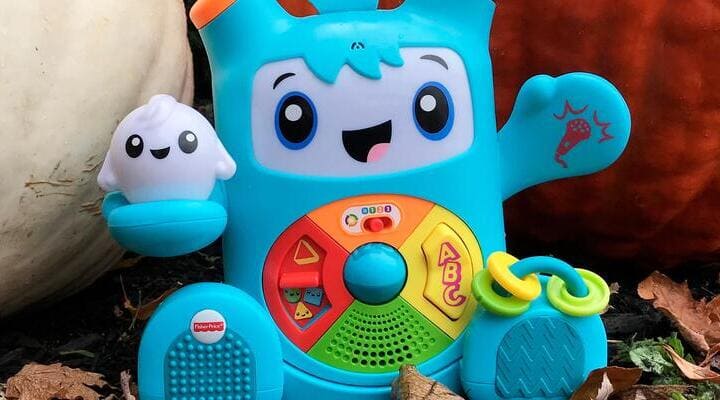If the sale of toys and games has increased since the start of the pandemic, Fisher-Price has experienced some setbacks due to numerous product recalls impacting the quality and reliability of the manufacturer. The brand has, therefore, fallen by nearly 13% over the past 5 years. Fisher-Price reports worldwide sales of $ 4.58 billion in 2020.
Products
Fisher-Price offers toys for infants and children up to 3 years of age and older. The range is broken down into several segments, to prepare for the arrival of a baby, from birth to 6 months, and every 6 months marks the arrival of a new segment until the age of 2 years, where the toys are then classified by age, 2 years and over, and 3 years and over.
Fisher-Price also owns several brands, such as Linkimals, Little People, Rires et Eveil and Méga Blocks.
In each brand, the games are always adapted to the children's ages.
Price
Fisher-Price corresponds to toys for all audiences, mid-range, with prices ranging from 10 to over 80 euros depending on the product.
The group's pricing policy is based on customer satisfaction and the principle of competitiveness, especially since the brand sells a large majority of its products in supermarkets.
Communication
As a brand for all audiences, Fisher-Price develops communication based on traditional media, but also on the Internet and social networks.
The new means of communication allow better interaction with Internet users and widens the clientele as much as possible.
Distribution
The main distribution methods are supermarkets, specialized stores, but also the Internet; Fisher-Price being present on the vast majority of online stores such as Amazon, in particular, Rakuten, etc.
Target
Fisher-Price's strategy is to target a large part of consumers since the products are certainly made for young children, but they are mainly produced to appeal to parents and grandparents. The group, therefore, defines a strategy based on product safety and the educational benefits they provide. Today, consumers are increasingly looking for educational toys. The products can also be intended for a more professional audience, such as nurseries and schools.
Purchasing process
The brand purchasing process can be carried out directly in stores, on the site, but also on many websites. Fisher-Price places particular importance on interactions with customers. Indeed, the service and the product sold are two different things because, with good service, the brand can have better customer satisfaction.
Physical evidence
Physical evidence can represent the satisfaction rate, turnover or even the profits made by the group. In the case of Fisher-Price, the physical evidence has been difficult to bring to the fore lately, as we said above, the brand has been struggling in recent years. Indeed, the high number of products recalled linked to safety defects do not necessarily give consumers confidence.
Partnership
Fisher-Price is developing a partnership with the Paroledemamans.com site, which allows it to gain notoriety and attract other customers.
Creating partnerships makes it possible to generate a different type of clientele and to promote certain products and services, which are more innovative and make it possible to convey a more dynamic image of a brand.
Marketing permission
Like many businesses, Fisher-Price asks customers for permission before using their personal data. This becomes essential to maintain customer satisfaction and secure them with regard to the disclosure of their personal data.
Purple cow
For Fisher-Price, as for all competitors in the sector, innovation makes it possible to avoid consumer fatigue and weariness which can be a dangerous threat, especially when one sees the extent of intra-industry competition.
Sources : Société info, Stratégies










